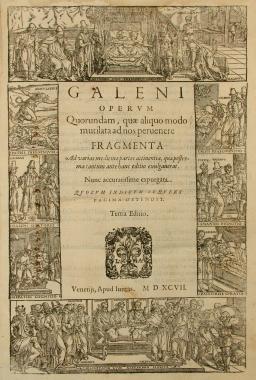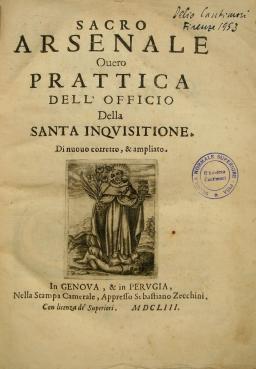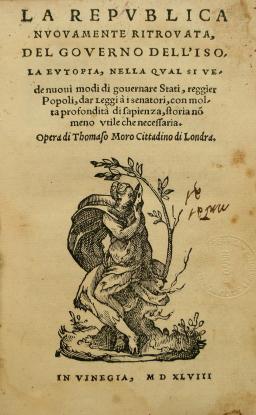
The typologies
It is possible to reconstruct the libraries of philosophers, and to proceed at the same time with an inventory of the philosophical texts present in the libraries of men of letters and of the sciences, gathering and publishing documents of different types:
- a) auction catalogues from the 1600s on, which attest to the sale of collections of books and manuscripts of single scholars;
- b) inventories, generally compiled for more administrative reasons, at the moment of donations or bequests upon deaths;
- c) bibliographic catalogues written by the owners themselves, or for them, in order to publicise their own collection and display its merit;
- d) the catalogues of institutional libraries, drawn up in order to orient users wishing to consult the collected texts.
These materials and documents differ among themselves, but all attest to the circulation of books and allow the reconstruction of the “workshop” of the philosopher or scholar. This makes both a thorough investigation of the sources of a single test and the identification of the cultural background of philosophers and scientists easier. It also makes it easier to bring the most representative works of an epoch or a given environment—that which has sometimes been defined as the “literary canon” of an age, a specific historic period or geographic place—into focus.
Compared to genuine bibliographic catalogues, which were drawn up in a systematic way and then completed with an often onerous editorial effort, sale catalogues for collectors and book lovers had quite a different fortune and circulation. The brochures and lists printed by the antique booksellers reached extraordinary levels of circulation as early as the 16th century, first in Holland and then in the rest of Europe. They often ended up being a chaotic and impenetrable “dark forest” in which it is difficult to find one’s way, since these catalogues were often completely forgotten once the sale was finished.
Leibniz himself used these lists as bibliographic repertories; he wrote to Joh. Fr. Mayer, on 23 June 1704: «Catalogis, quales Franckofurtani, Lipsiensis et his concinnatae collections Draudiane et Lipeniannae, non satis fide posset, sed magis indicibus Bibliothecarum et auctionum» (Palombo 1993). And his way of working was in agreement with the saying : «ex catalogis et libris doctorum virorum studia eorum cognosci posse».
From a historiographic point of view, only subsequently do significant reflections about the question appear. When the season of the great Hegelian and Neokantian philosophic historiography seemed to draw to a conclusion, attention moves to legacies, unpublished materials and private libraries as well. In 1889 Wilhelm Dilthey, intent on highlighting “the unity of the history of philosophy and of the history of culture” suggested the systematic institution of “literary archives” to gather “plans, sketches, projects and letters” but also the books owned and annotated by the philosophers. While supporting the initiative, which contributed to highlighting the limits of a historiography interested only in the “history of systems”, Dilthey commented on the complex fortune of the Kantian legacy, bewailing the fact that the archives and the books of philosophers so often finish under “the gavel of the auctioneer”. At Kant’s death, most of his papers and volumes were divided between Professor Gensichen, who inherited the library, the bookseller Nicolovius, publisher of his books, and the ecclesiastic Wasianski, executor of his will. Subsequently, upon the auctioning of the Kantian papers “in Gensichen’s possession, a copy of Baumgarten’s Metaphysics, with interleaves and with numerous annotations written by Kant even on the printed pages (see Benno Erdmann, “Kant’s Reflections on Critical Philosophy, 1882) and a compendium of Meier’s “Doctrine of Reason” with Kant’s handwritten notes as well, reached Tartu” (Dilthey 1889).
The need asserted by Dilthey was insisted upon again by other scholars at the beginning of the 1900s. Giovanni Gentile, for example, in his preface to the first edition of the Bibliography of Giordano Bruno’s works by Virgilio Salvestrini (1926), indicates the importance, for the reconstruction of the “posthumous history” of the work of Bruno, “of examining the old catalogues of the libraries” because they “would allow us to document the real circulation of texts which, rare and prohibited, encountered many different obstacles in their circulation” (Canone 1993). Between the end of the 1800s and the first decades of the 1900s some very prestigious library catalogues were published: Galileo’s library by Favaro (Favaro 1886 and 1887), Montaigne’s as reconstructed by Villey (1908), and that of Pico as proposed by Kibre (1936).
It is therefore worthwhile to explore the main public libraries of Europe where sale catalogues of prestigious private collections are conserved: a copy of the catalogue of Dilthey’s library, printed in 1911, can be found in the Universitätsbibliothek of Leipzig. Lorenz Oken’s can be found in the Universitätsbibliothek of Basle, Alexander von Humboldt’s, published in the 1860s, can be found both in the British Library of London and in the Staatsbibliothek of Berlin.
Along with the sale catalogues the exploration of philosophic literature present in the private libraries of philosophers and scholars in the modern era involves a census of the registered collections. Collections of this type have often reached us in integral condition, since they were donated to public libraries or sometimes constituted the first nucleus of a library, as for example the collection of the codices of Cardinal Bessarione were the founding nucleus of the Biblioteca Marciana in Venice.
As an example of the difficulties which must be resolved, and the way to resolve them, we can consider the case of the Libreria di Galileo Galilei. Antonio Favaro’s study, published in 1886, “is not only pioneering when compared to the research about private libraries of astronomers in the modern age—studies dedicated to an overall reconstruction of the library collections of Copernicus, Tycho Brahe and Newton only appeared much later—but it is even more noteworthy if one thinks that the scholar did not have a specific inventory of Galileo’s library to ease his reconstruction efforts” (Canone 1993). Favaro used many different archival sources: the inventory of the inheritance of Galileo’s son, Vincenzo, who died in 1649, the inventory of the books found in the house of Sestilia Bocchineri Galilei in January 1663, the inventory of the rich library of Vincenzo Viviano, who inherited large part of the books of Galileo, now conserved in the National Library of Florence and in some private collections.
The private collections of books, whether they merge with public libraries at a certain point or whether they are auctioned and end up on the shelves of other private libraries, are always privileged places of memory, material traces of a world which is otherwise destined to become corrupt and vanish (Bianchi 1993).
The “reading” and the study of library collections must in any event be “selective” since the materials catalogued are often incomplete. For example, through the catalogue of the library of Voltaire it is certainly possible to trace decisive developments in modern philosophy: “from the anti-Cartesian polemics of John Locke to the reflection of Shaftesbury on moral and sentiment, to the anti-dogmatism of John Toland, Samuel Clarke and Anthony Collins, up to the sceptical results of David Hume’s philosophy” (Carella 1993). But a constant critical scrutiny of this bibliographic documentation is necessary, since in this specific case, the great interest of Voltaire for Newton’s work is not reflected in the catalogue of the library, where there are no volumes of Principia mathematica. The study of catalogues and inventories needs to be integrated with the collection of domestic registers, which as a literary genre are usually composite and inhomogeneous—spontaneous and direct voice of entire generations of families, a self portrait of patrimony and family status, but sometimes a description of a cultural and library microcosm.
The catalogues of library collections are of different types: sometimes printed compilations, in other cases the result of archival and library reorganizations. Often they are inventories drawn up at the moment of donations to archives, institutions and libraries. In general, this material can be incomplete and sometimes of dubious origin: an example is Antonio Labiola’s library, which has never been completely reconstructed, of which a small portion and a clearly incomplete, typewritten register are the only things which remain. In the case of the printed compilations, the sources are second hand, in the case of an inventory, this or the topographic catalogue needs to be obtained, which is usually in a single paper copy only at the institution which owns the volumes. The analysis of these inventories is not simple because it sometimes requires sorting through volumes and groups of books belonging to different people and casually united in the library collection, this is, however, an indispensable preliminary task. This type of collection is particularly common in the 1800 and 1900s in the collections donated by university professors: usually the patron of the libraries that own these books only has access to the alphabetical catalogue, from which the collection which belonged to a person cannot be reconstructed.
Publishing these instruments online, however, simplifies the research for a scholar. Examples of these typologies of catalogues are those for example of the professors of philosophy at the University of Florence (F. Tocco, G. Tarozzi, F. De Sarlo, G. Preti, E. Garin, C. Luporini etc.) and the University of Naples (B. Spaventa, A. Angiulli), but also of some nearly unheard of people, philosophy enthusiasts with no public positions, whose catalogues document the readings and library circulation in narrow intellectual areas. An example of this latter is the collection of V. Finamore, in the library of Ortona (Chieti), whose handwritten inventory documents the formation of an unusual philosophic library, around the change in theoretical perspective in a priest in the mid 1800s who dedicated himself to studying after leaving the priesthood.
The research also has to be extended to less common sources, such as the document summaries and inventories of general libraries or sources such as the livres de raison (Bardet et Ruggiu 2005, Tricard 2002), or “family books” (Bec 1984, Cazalé et Klapisch-Zuber 2004, Mordenti 2001 e 2004). These are at the same time domestic registers and collections of various testimonies in which, together with the documentation of the events and family patrimony, materials of quite different nature are often found. These materials can be daily diaries, autobiographic annotations, transcriptions of genealogical trees with precise birth, marriage and death dates. The livres de raison and “family books” are a central reference point of a family system of written memoirs, destined, even if only in a fragmentary way, to be conserved over time. It is a selective memoir, which culls out the elements which best serve to maintain and preserve the fortunes of a family, but which is in any event an important source for documenting aspects of customs as explored through the analysis of family structures. An example of this are the pages of document summaries of the library of Jehan de Piochet de Salins, who lived from 1532 to 1624, and whose files, preserved in the Archives départementales de la Savoie, are truly a mirror which reflects not only private spaces but also the cultural world to which they belong.






